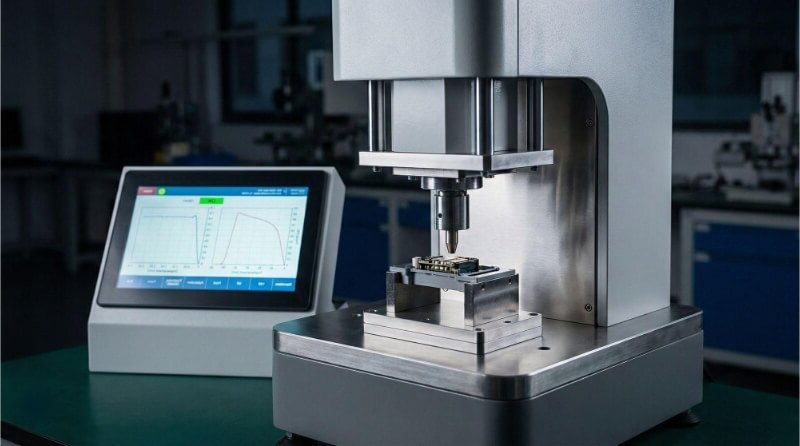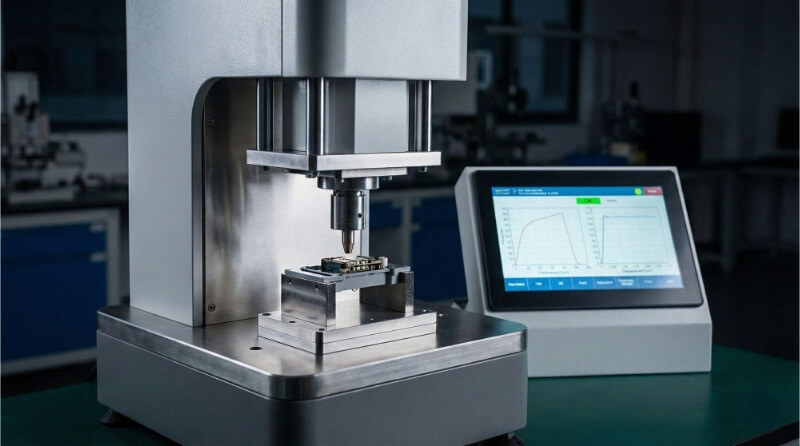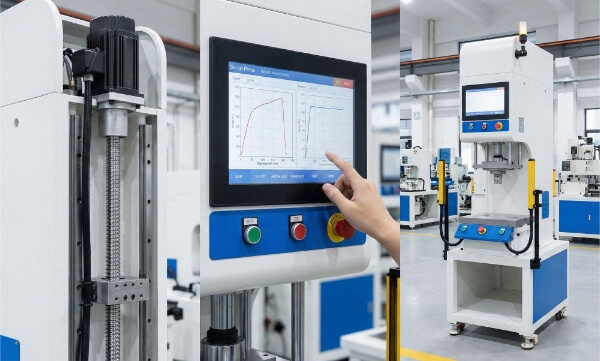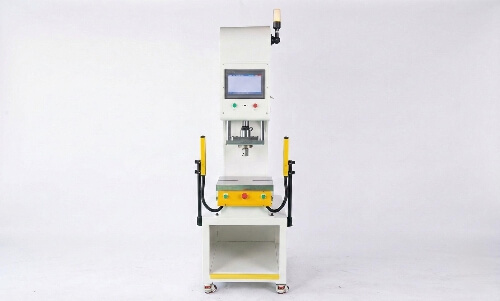Many manufacturers face the same challenge—achieving a deep, durable black finish on aluminum parts that doesn’t peel, fade, or scratch easily. Standard coatings may wear off. Paints don’t always bond well. Clients want lasting results that also look clean and professional. That’s where black anodizing comes in. It enhances the metal’s natural surface, adds color, and boosts performance all in one go.
Black anodizing changes the way aluminum looks and performs. It adds color without paint. This post will break it down step by step, so you’ll know exactly how black anodizing works and when to use it.
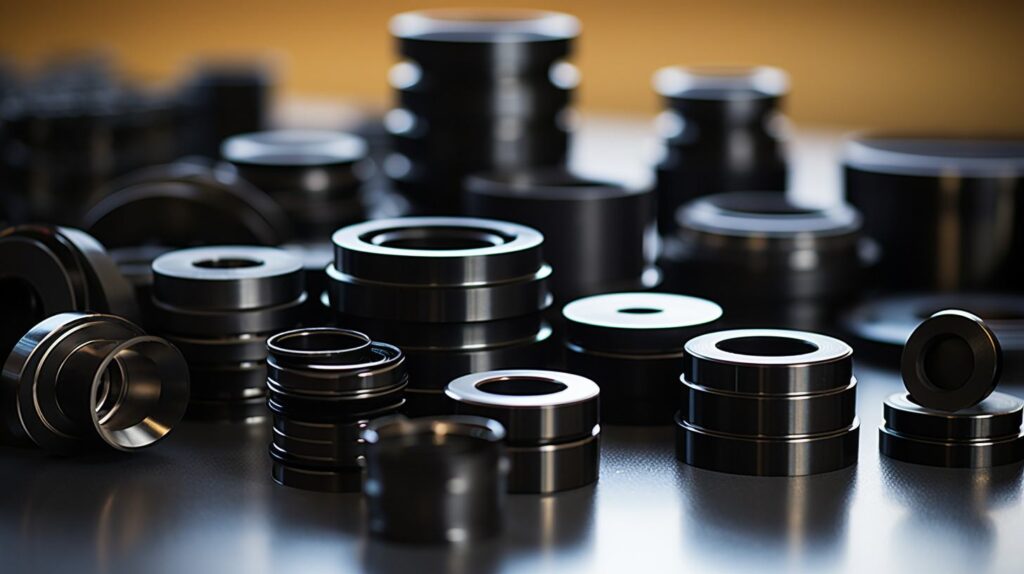
What Is Aluminum Black Anodizing?
Aluminum black anodizing is a process that builds a hard, colored surface on aluminum. The metal is placed in an acid bath and connected to electricity. This creates an oxide layer on the surface. Black dye is added to this layer while it’s still open. The part is then sealed to trap the color and protect it.
Anodizing gives aluminum better wear and corrosion resistance. It also allows the surface to hold color deeply. The new layer is part of the metal, not just sitting on top. This means the color won’t chip or peel like paint.
After the oxide layer forms, the aluminum part goes into a black dye bath. The pores in the oxide layer soak in the dye. After that, the part is sealed in hot water or a special chemical. This closes the pores and locks in the black color. The result is a clean, even, and lasting black finish.
Choosing the Right Aluminum Material
Not all aluminum alloys give the same results during anodizing. Some work well. Others may turn out blotchy or uneven, especially with black dye.
Suitable Aluminum Alloys for Anodizing
Most aluminum alloys can be anodized. The best results usually come from pure aluminum and the 5xxx or 6xxx series. Alloys like 5052, 6061, and 6063 form consistent oxide layers and take dye well.
Alloys That Yield Better Black Finishes
For deep, rich black color, 6061 is a popular choice. It produces a smooth, uniform oxide layer. 5052 also performs well and offers good corrosion resistance. These alloys absorb dye evenly and result in a darker, more uniform finish after sealing.
Alloys to Avoid for Black Anodizing
Some aluminum alloys contain too much copper, silicon, or iron. These elements can interfere with the anodizing process. For example, 2024 and 7075 may appear blotchy or grayish after anodizing. Alloys in the 2xxx and 7xxx series should be avoided when a clean black finish is needed.
How the Black Anodizing Process Works?
Black anodizing has several steps. Each one affects the final color, durability, and quality of the finish. Skipping or rushing any step can lead to poor results.
Step 1: Surface Preparation
The part is first cleaned to remove oil, dirt, and oxide from the surface. This step uses alkaline cleaners or mild acid washes. A clean surface helps the oxide layer form evenly.
Step 2: Etching and Desmutting
Etching removes a thin layer of the surface to create a uniform texture. It also gets rid of any marks or minor defects. Desmutting comes next. It removes residues left behind by alloying elements like copper or silicon.
Step 3: Anodizing (Electrochemical Oxidation)
The cleaned part is placed in an acid bath, usually sulfuric acid. A direct current passes through the tub. The aluminum becomes the anode. Oxygen reacts with the surface, forming a thick oxide layer. This layer is porous and allows dye to soak in later.
Step 4: Dyeing (for Black Color)
The part is dipped into a black dye solution. The open pores absorb the dye. The time spent in the dye affects how dark the color becomes. A longer time usually means a deeper black.
Step 5: Sealing
After dyeing, the part is sealed. This step closes the pores and locks in the black color. Sealing also improves corrosion resistance. It is done with hot water, steam, or a chemical sealant. Once sealed, the anodized surface becomes complex and long-lasting.
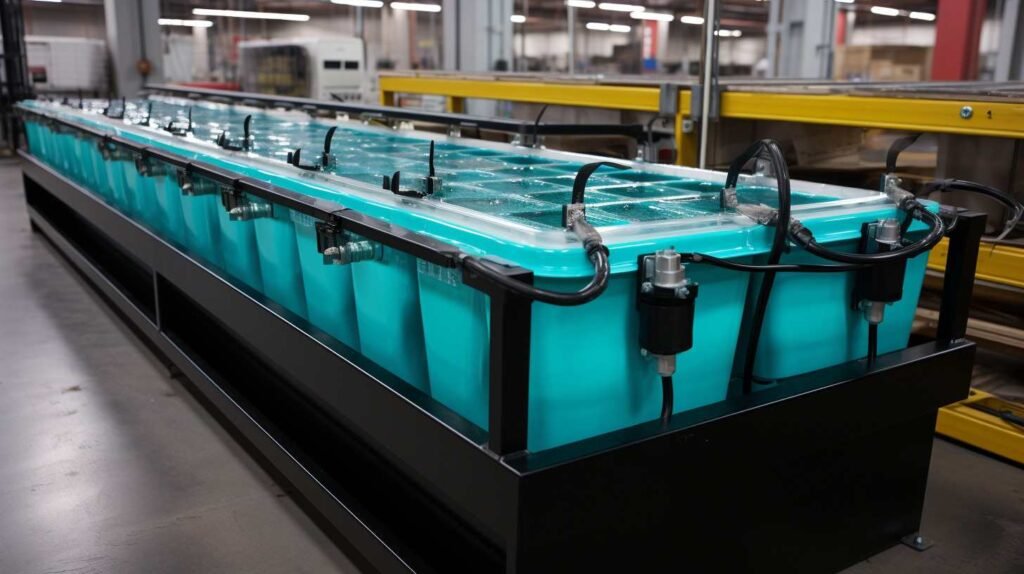
Process Equipment and Requirements
Black anodizing requires specific tools and safety measures. Getting the proper setup ensures quality results and protects you from hazards.
Anodizing Tank Setup
A chemically resistant tank will be used for the anodizing bath. Polypropylene or lead-lined steel tanks work best. The size depends on your parts—make sure they fully submerge.
Fill the tank with a sulfuric acid solution. Mix 1 part acid with 3 parts distilled water. Never add water to acid—always pour acid slowly into water to prevent splashing.
Power Supply and Fixtures
A DC power supply is essential. Set it between 12 and 18 volts for most aluminum anodizing. The current density should be around 12 amps per square foot.
Use titanium or aluminum racks to hold parts. Ensure good electrical contact—clean connections prevent uneven coating. The cathode (negative lead) should be lead or stainless steel.
Ventilation and Safety Gear
Acid fumes are dangerous. Work in a well-ventilated area or use a fume hood. Wear acid-resistant gloves, goggles, and an apron.
Keep a neutralizing agent nearby, like baking soda, in case of spills. Have an eyewash station ready. Never skip safety—chemical burns and fumes are serious risks.
Different Types of Black Anodizing
Black anodizing comes in several types. Each one uses a different method or material and gives different surface results. The right type depends on the part’s function and environment.
Type I (Chromic Acid Anodizing)
This uses chromic acid instead of sulfuric acid. It forms a thinner oxide layer. It’s often used for aerospace parts. It gives good corrosion resistance but doesn’t absorb dye well. So, it’s not ideal for deep black finishes.
Type II (Sulfuric Acid Anodizing)
This is the most common type. It forms a moderate oxide layer, usually 0.0002″ to 0.001″. It absorbs dye well and is the standard choice for black anodizing. It balances durability, color depth, and cost.
Type III (Hard Anodizing or Hardcoat Anodizing)
This type builds a much thicker oxide layer—up to 0.002″. It’s used when high wear resistance is needed. It can also be dyed black, but the deeper pores require more dye. It gives a more matte, darker tone.
PTFE (Teflon) Impregnated Anodizing
This version adds PTFE into the oxide layer after anodizing. It lowers surface friction and boosts wear resistance. It’s helpful in sliding parts. The finish can still be black, but it’s more about function than color.
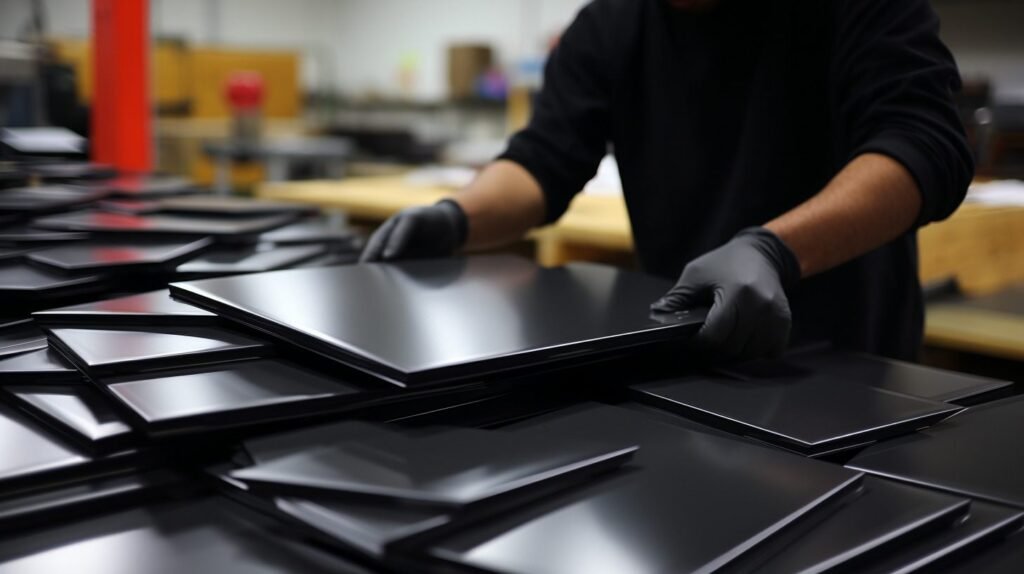
Why Choose Black Anodized Aluminum?
Black anodized aluminum offers practical benefits that make it a top choice for many industries. Here’s why it stands out:
Highly Aesthetic Appearance
The process creates a deep, uniform black finish that looks premium and professional. Unlike paint, it won’t chip or peel over time. The color penetrates the surface, so scratches are less noticeable. This makes it ideal for consumer products, electronics, and architectural elements where appearance matters.
Corrosion Resistance
The anodized layer forms a protective barrier against rust and oxidation. It withstands harsh weather, chemicals, and saltwater exposure better than untreated aluminum. This durability makes it perfect for outdoor applications, marine equipment, and industrial components.
Cost Effective
Anodizing is more affordable than many alternative finishes in the long run. It requires minimal maintenance and lasts for years without fading or wearing off. The process also adds value to aluminum parts without significantly increasing production costs.
Thermally Stable
Black anodized aluminum handles heat better than painted surfaces. It reflects infrared radiation while maintaining dimensional stability at high temperatures. This thermal resistance makes it suitable for heat sinks, automotive parts, and lighting fixtures.
Common Issues in Black Anodizing and How to Fix Them
Even minor errors in the anodizing process can affect the final result. Below are some common problems and how to solve them.
Uneven Color or Fading
This usually happens when the oxide layer is not uniform. It may be caused by poor cleaning or inconsistent electrical current. To fix this, make sure the surface is thoroughly cleaned before anodizing. Also, check that the voltage and temperature are steady during the process.
Pitting or Burning of Aluminum
Pitting shows up as small holes on the surface. It can be caused by impurities or too much acid concentration. Burning often results from high current or poor cooling. To avoid these, keep the bath clean, monitor acid strength, and use a cooling system to control heat.
Poor Adhesion of Dye
If the dye does not stick well, the pores might be closed or not deep enough. This can happen if the anodizing time is too short or the temperature is too high. Extend the anodizing time slightly and lower the bath temperature to form deeper pores. Always dye the parts soon after anodizing to keep pores open.
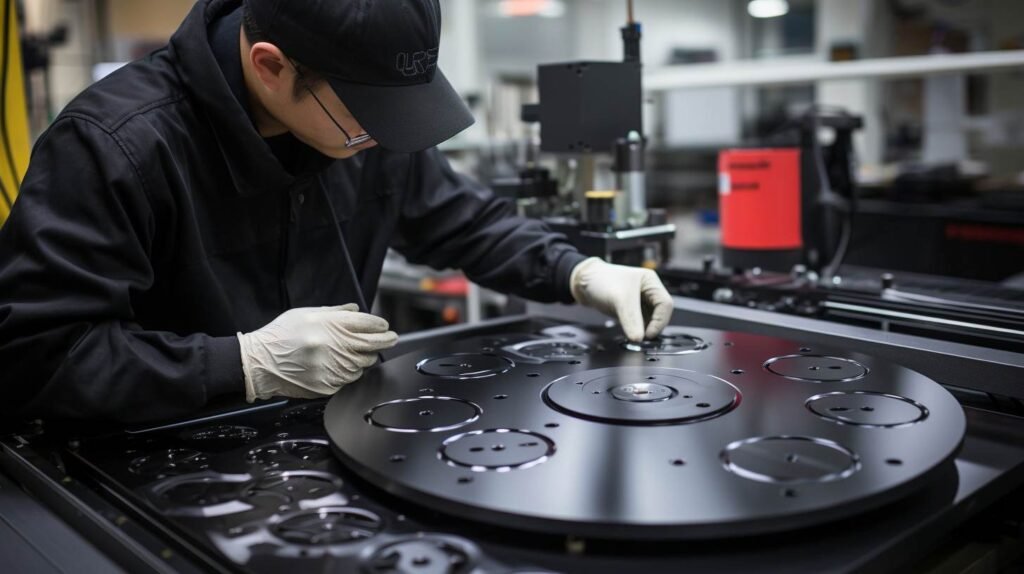
Black Oxide vs Black Anodizing
These two finishes may look similar, but they work very differently. Each one has its benefits and limits, depending on the part’s use.
Process
Black anodizing is an electrochemical process. It changes the surface of aluminum by building an oxide layer. Black dye is added to the layer and then sealed.
Black oxide is a chemical treatment. It reacts with the surface of steel or stainless steel. It gives a black finish but does not build up the surface like anodizing.
Material Compatibility
Black anodizing works on aluminum. It does not work on steel or iron. Black oxide is used on steel, stainless steel, copper, and some other metals, but not on aluminum.
Durability
Black anodizing gives better wear and corrosion resistance. The oxide layer is more rigid and more durable. Black oxide offers minimal protection and is usually coated with oil or wax to improve corrosion resistance.
Appearance
Both provide a matte black finish. However, black anodizing tends to look cleaner and more uniform. Black oxide can look duller or uneven without a topcoat.
Cost and Use
Black oxide is cheaper and faster. It’s used when looks matter but performance isn’t critical. Black anodizing costs more but offers better durability and is better for long-term use.
Where Black Anodized Aluminum Is Used?
Black anodized aluminum is popular across many industries. It offers a clean look, resists wear, and performs well in harsh environments.
Consumer Electronics and Gadgets
Laptops, smartphones, camera bodies, and audio gear often use black anodized housings. The finish gives a premium look. It also resists fingerprints, scratches, and fading from daily use.
Automotive Trim and Components
Black anodized parts are used in interior trims, knobs, and under-the-hood components. The finish stands up to heat and wear. It also helps reduce glare and gives a sleek design.
Aerospace and Defense Uses
Aircraft parts, drones, and military gear benefit from black anodizing. The finish is lightweight, corrosion-resistant, and does not reflect light. It helps parts stay durable and discreet.
Architecture and Decorative Parts
Door frames, panels, and handles often use black anodized aluminum. The surface holds up well outdoors. It resists corrosion and keeps its color even with sun and rain exposure.
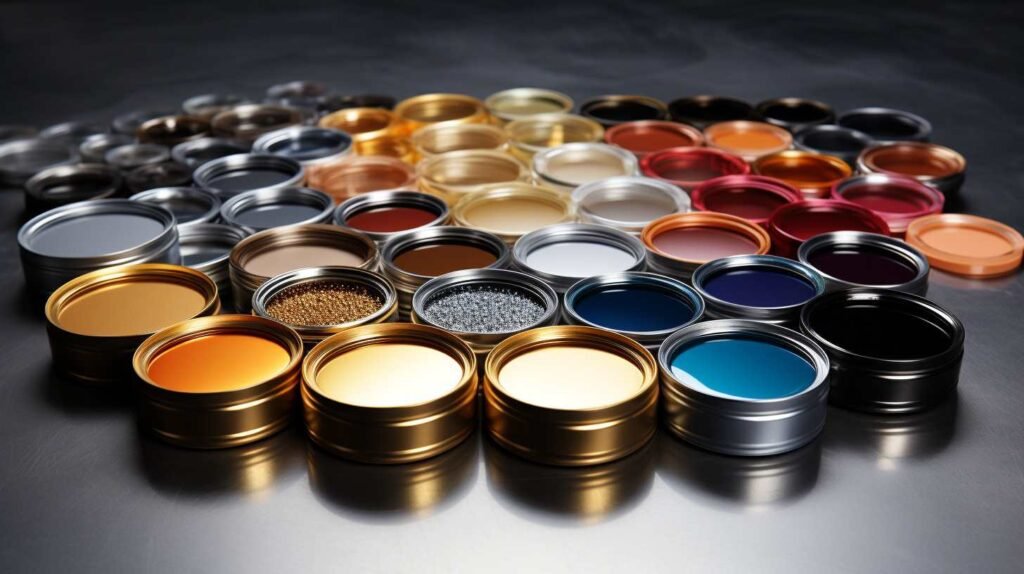
Tips to Get Better Black Anodizing Results
To get consistent, high-quality results, the process needs careful control from start to finish. The tips below can help improve both small-batch and large-scale production.
Pre-Anodizing Masking Techniques
Some areas of a part may need to stay conductive or uncoated. Use masking tape or special anodizing wax to block those areas before the anodizing process. Apply the mask evenly and press it down tightly. This helps avoid leaks and ensures sharp edge lines.
Choosing the Right Supplier or Equipment
Use equipment that allows for precise control of temperature, current, and timing. If you’re outsourcing, choose a supplier with proven experience in black anodizing. Ask to see sample finishes or test runs to confirm quality.
Consistency in Large-Scale Production
Batch-to-batch variation can be a problem in large runs. Keep the chemical bath clean and at stable levels. Use the same fixtures and setup each time. Log settings for each batch to repeat successful results. Even small changes in process time or temperature can affect the color tone.
Conclusion
Black anodizing gives aluminum parts a strong, wear-resistant, and attractive finish. It works through a step-by-step process that builds an oxide layer, adds black dye, and seals the surface. Choosing the right alloy, controlling each stage, and using proper equipment are key to getting good results.
Need black anodized parts for your next project? We offer fast quotes, expert advice, and precision finishing for your custom aluminum parts. Contact us today to get started.
Hey, I'm Kevin Lee

For the past 10 years, I’ve been immersed in various forms of sheet metal fabrication, sharing cool insights here from my experiences across diverse workshops.
Get in touch

Kevin Lee
I have over ten years of professional experience in sheet metal fabrication, specializing in laser cutting, bending, welding, and surface treatment techniques. As the Technical Director at Shengen, I am committed to solving complex manufacturing challenges and driving innovation and quality in each project.

